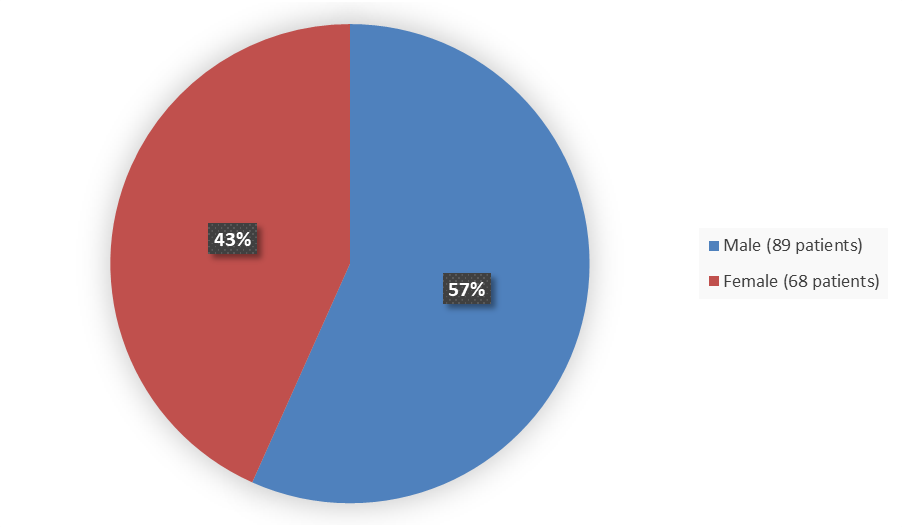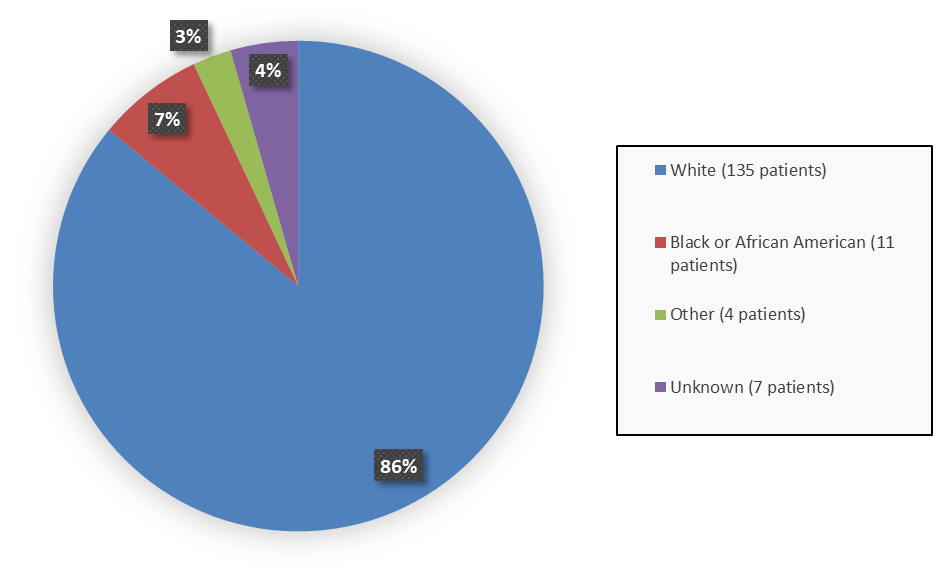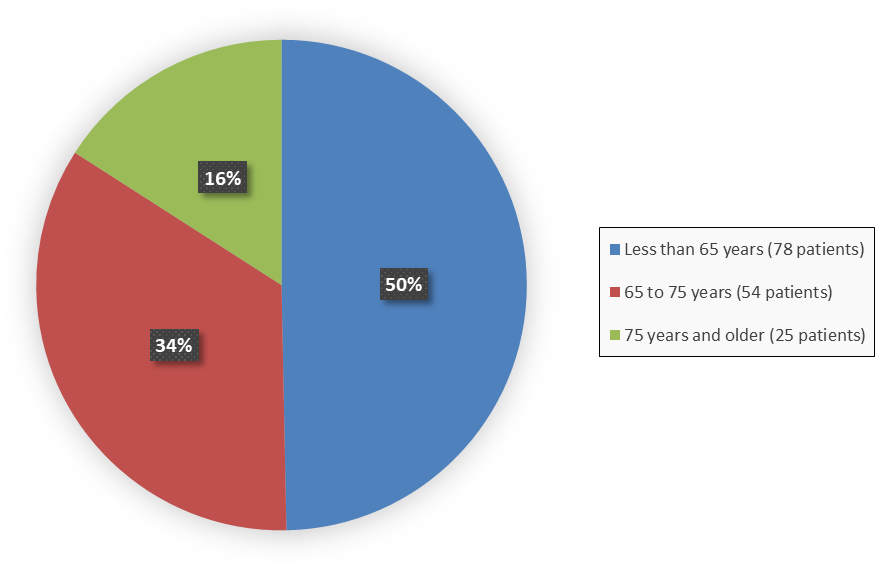Drug Trial Snapshot: PEPAXTO
HOW TO USE THIS SNAPSHOT
The information provided in Snapshots highlights who participated in the key clinical trials that supported the original FDA approval of this drug, and whether there were differences among sex, race, age, and ethnic groups. The “MORE INFO” bar shows more detailed, technical content for each section. The Snapshot is intended as one tool for consumers to use when discussing the risks and benefits of the drugs.
LIMITATIONS OF THIS SNAPSHOT:
Do not rely on Snapshots to make decisions regarding medical care. Always speak to your healthcare provider about the benefits and risks of a drug.
Some of the information in this Snapshot is for presentation purposes and does not represent the approved conditions of use of this drug. Refer to the PEPAXTO Prescribing Information for all of the approved conditions of use of this drug (e.g., indication(s), population(s), dosing regimen(s), safety information).
Snapshots are limited to the information available at the time of the original approval of the drug and do not provide information on who participated in clinical trials that supported later approvals for additional uses of the drug (if applicable).
PEPAXTO (melphalan flufenamide)
(Peh-PAX-toe)
Oncopeptides AB
Approval date: February 26, 2021
DRUG TRIALS SNAPSHOT SUMMARY:
What is the drug for?
PEPAXTO is a prescription medicine used in combination with the medicine dexamethasone to treat adults with multiple myeloma who did not respond to or stopped responding to at least four prior medicines including at least one proteasome inhibitor, one immunomodulatory agent and one CD38-directed antibody.
How is this drug used?
PEPAXTO is given by a healthcare provider into the vein through an intravenous line (IV). PEPAXTO is usually given 1 time every 28 days.
What are the benefits of this drug?
In the trial, 23.7% of patients responded to treatment with PEPAXTO. Responses lasted between 3.2 and 7.6 months (median 4.2 months).
PEPAXTO was approved under FDA’s accelerated approval program, which provides earlier patient access to a promising new drug while the company continues to conduct clinical trials to confirm that the drug works well.
What are the benefits of this drug (results of trials used to assess efficacy)?
Table 1: Efficacy Results (HORIZON)
|
|
PEPAXTO with Dexamethasone |
|---|---|
|
Overall response rate (ORR), n (%) |
23 (23.7) |
|
Stringent complete response (sCR) |
0 |
|
Complete Response (CR) |
0 |
|
Very good partial response (VGPR), n (%) |
9 (9.3) |
|
Partial response (PR), n (%) |
14 (14.4) |
|
Median duration of response in months |
4.2 |
Source: PEPAXTO Prescribing Information
Were there any differences in how well the drug worked in clinical trials among sex, race and age?
- Sex: PEPAXTO appeared to work similarly in men and women.
- Race: The number of patients of races other than White was small; therefore, differences in how PEPAXTO worked among races could not be determined.
- Age: No difference in response to PEPAXTO was detected across age groups. The observed differences in overall response rate were not greater than one could expect given the variability of patients and the number of patients in the trial.
Were there any differences in how well the drug worked in clinical trials among sex, race, and age groups?
A demographic subgroup analysis of the efficacy of PEPAXTO in combination with dexamethasone in patients with multiple myeloma is shown below.
Table 2: Demographic Subgroup Analysis
|
Demographic |
Overall Response Rate n/N (%) [95% CI] |
|---|---|
|
Gender |
|
|
Female |
15/49 (30.6) [18.3, 45.4] |
|
Male |
16/70 (22.9) [13.7, 34.4] |
|
Race* |
|
|
White |
26/100 (26.0) [17.7, 35.7] |
|
Other** |
4/18 (22.2) [6.4, 47.6] |
|
Age Group |
|
|
< 65 Years |
12/59(20.3) [11.0, 32.8] |
|
≥ 65 Years |
19/60 (31.7) [20.3, 45.0] |
Source: FDA Review
*Due to small sample size within subgroups, it is difficult to conclude differences in efficacy between subgroups
**Other includes Black, Asian, and Missing.
What are the possible side effects?
The most common side effects include low blood cell counts, fatigue, nausea, diarrhea, fever, and cold-like symptoms (respiratory tract infection).
The most common laboratory abnormalities were low blood cell counts, including:
- low platelet counts which may cause bleeding or bruising under the skin,
- low red blood cell counts which may cause a sense of weakness or tiring easily, paleness or feeling short of breath, and
- low white blood cell counts which can increase the risk of infections.
Secondary cancers, such as myelodysplastic syndrome or acute leukemia have been reported. In addition, taking PEPAXTO can cause fetal harm and breastfeeding is not advised.
What are the possible side effects (results of trials used to assess safety)?
The side effects of PEPAXTO and dexamethasone are shown in the table below.
Table 3: Adverse reactions (≥10%) in Patients with RRMM Who Received PEPAXTO with Dexamethasone in HORIZON
|
Adverse Reaction |
PEPAXTO with Dexamethasone |
|
|---|---|---|
|
All Grades (%) |
Grade 3 or 4 (%) |
|
|
General disorders and administration site disorders |
||
|
Fatigue1 |
55 |
6 |
|
Pyrexia2 |
24 |
1.9 |
|
Edema peripheral2 |
14 |
1.3 |
|
Gastrointestinal disorders |
||
|
Nausea2 |
32 |
0.6 |
|
Diarrhea |
27 |
0 |
|
Constipation2 |
15 |
0.6 |
|
Vomiting |
13 |
0 |
|
Infections |
||
|
Respiratory tract infection2,3 |
24 |
5 |
|
Pneumonia4 |
13 |
11 |
|
Respiratory, thoracic and mediastinal disorders |
||
|
Cough2 |
17 |
0 |
|
Dyspnea2 |
11 |
1.3 |
|
Dyspnea exertional |
10 |
0 |
|
Metabolism and nutrition disorders |
||
|
Decreased appetite2 |
14 |
0.6 |
|
Hypokalemia2 |
14 |
1.3 |
|
Hypocalcemia2 |
10 |
0.6 |
|
Nervous system disorders |
||
|
Headache |
13 |
0 |
|
Dizziness |
11 |
0 |
|
Musculoskeletal and connective tissue disorders |
||
|
Bone pain2 |
13 |
1.9 |
|
Pain in extremity2 |
13 |
1.9 |
|
Back pain2 |
12 |
0.6 |
|
Arthralgia |
10 |
0 |
|
Psychiatric disorders |
||
|
Insomnia2 |
11 |
0.6 |
Source: PEPAXTO Prescribing Information
1Fatigue incudes fatigue and asthenia
2 No Grade 4 adverse reactions occurred
3 Respiratory tract infection includes upper respiratory tract infection, lower respiratory tract infection, respiratory tract infection, and respiratory tract infection viral
4 Pneumonia includes pneumonia, pneumocystis jirovecii pneumonia, and pneumonia viral
The laboratory abnormalities that worsened from baseline for PEPAXTO and dexamethasone are shown in the table below.
Table 4: Laboratory Abnormalities (≥50%) That Worsened from Baseline in Patients in HORIZON
|
Laboratory Abnormality |
PEPAXTO with Dexamethasone1 |
|
|---|---|---|
|
All grades2 |
Grade 3-43 |
|
|
Leukocytes decrease |
99 |
88 |
|
Platelets decrease |
99 |
80 |
|
Lymphocyte decrease |
97 |
95 |
|
Neutrophils decrease |
95 |
82 |
|
Hemoglobin decrease |
84 |
50 |
|
Creatinine increase |
68 |
14 |
Source: PEPAXTO Prescribing Information
1 Denominators for percentages are the number of patients with assessments at baseline and post-baseline (N=157 for all abnormalities)
2 Patients with any worsening grade
3 Patients with worsening to Grade 3 or 4, respectively
4 No Grade 4 laboratory abnormality occurred
Were there any differences in side effects of the clinical trials among sex, race, and age?
- Sex: The occurrence of side effects appeared to be similar in men and women.
- Race: The number of patients of races other than White was small; therefore, differences in the occurrence of side effects among races could not be determined.
- Age: The occurrence of sides effects appears to be similar across the age groups.
Were there any differences in side effects of the clinical trials among sex, race, and age groups?
Table 5 and Table 6 shows an evaluation of treatment emergent adverse events (TEAEs) based on sex and age respectively. The majority of the patients on the trial were white, and the small number of patients in racial subgroups precludes conclusion about side effects based on race.
Table 5: Side effect analysis based on sex
|
|
Men |
Women |
|---|---|---|
|
Any TEAEs |
89 (100) |
68 (100) |
|
Any grade 3, 4 or 5 TEAEs |
84 (94.4) |
66 (97.1) |
|
Serious AEs |
44 (49.5) |
33(48.5) |
Source: FDA Review
Table 6: Side effect analysis based on age
|
|
<65 |
≥65 - <75 |
≥75 |
|---|---|---|---|
|
Any TEAEs |
78 (100.0) |
54 (100.0) |
25 (100.0) |
|
Any grade 3, 4 or 5 TEAEs |
72 (92.3) |
54 (100.0) |
24 (96.0) |
|
Serious AEs |
44 (56.4) |
23 (42.6) |
10 (40.0) |
Source: FDA Review
WHO WAS IN THE CLINICAL TRIALS?
Who participated in the clinical trials?
The FDA approved PEPAXTO based on evidence from a clinical trial of 157 adult patients with multiple myeloma. The trial was conducted at 17 sites in 4 countries in Spain, France, Italy and the US.
Figure 1 summarizes how many men and women were enrolled in the clinical trial used to evaluate the safety of PEPAXTO.
Figure 1: Baseline Demographics by Sex (Safety Population)
Source: FDA Review
Figure 2 summarizes the percentage of patients by race enrolled in the clinical trial used to evaluate the safety of PEPAXTO.
Figure 2: Baseline Demographics by Race (Safety Population)
Source: FDA Review
The figure below summarizes how many patients by age were in the trial used to evaluate the side effects of PEPAXTO.
Figure 3: Baseline Demographics by Age (Safety and Efficacy Population)
Source: FDA Review
Who participated in the trials?
The evaluation of PEPAXTO in combination with dexamethasone was based primarily on a single arm trial which included 157 patients. The demographic of the entire population of this trial is shown in this section. The population to determine how well the drug worked, or the efficacy population, was a smaller group of the overall population. For the efficacy population of 97 patients, 58% were male, 87% were white and 6% were Black or African American.
How were the trials designed?
PEPAXTO was evaluated in 1 single-arm, open-label clinical trial of 157 adult patients with relapsed refractory multiple myeloma who were treated with at least 2 prior lines of therapy. The efficacy was measured by overall response rate.
How were the trials designed?
The evaluation of PEPAXTO in combination with dexamethasone was based primarily on a trial which included a total of 157 patients with previously treated multiple myeloma who received at least 2 prior lines of therapy. There was no comparator arm in this trial. All patients were to receive PEPAXTO in combination with dexamethasone. The approval for efficacy was based on a subset of 97 of these patients who were treated with 4 or more lines of therapy and whose disease was refractory to at least 1 proteasome inhibitor, 1 immunomodulatory drug and 1 CD38 directed monoclonal antibody.
The safety evaluation included all 157 patients who enrolled in the trial.
GLOSSARY
CLINICAL TRIAL: Voluntary research studies conducted in people and designed to answer specific questions about the safety or effectiveness of drugs, vaccines, other therapies, or new ways of using existing treatments.
COMPARATOR: A previously available treatment or placebo that is compared to the actual drug being tested.
EFFICACY: How well the drug achieves the desired response when it is taken as described in a controlled clinical setting, such as during a clinical trial.
PLACEBO: An inactive substance or “sugar pill” that looks the same as, and is given the same way as, an active drug or treatment being tested. The effects of the active drug or treatment are compared to the effects of the placebo.
SUBGROUP: A subset of the population studied in a clinical trial. Demographic subsets include sex, race, and age groups.



